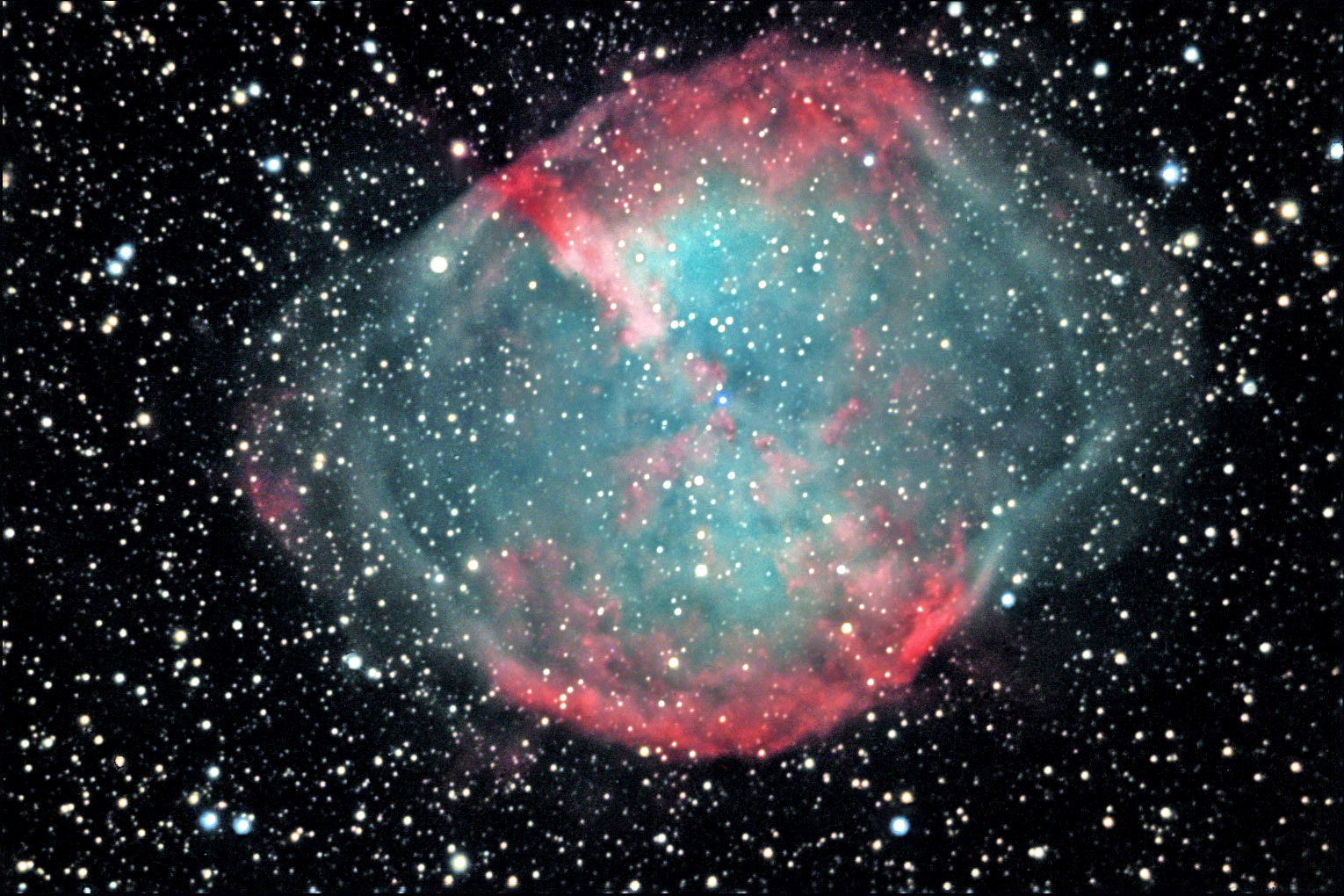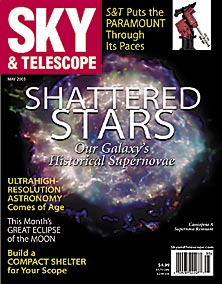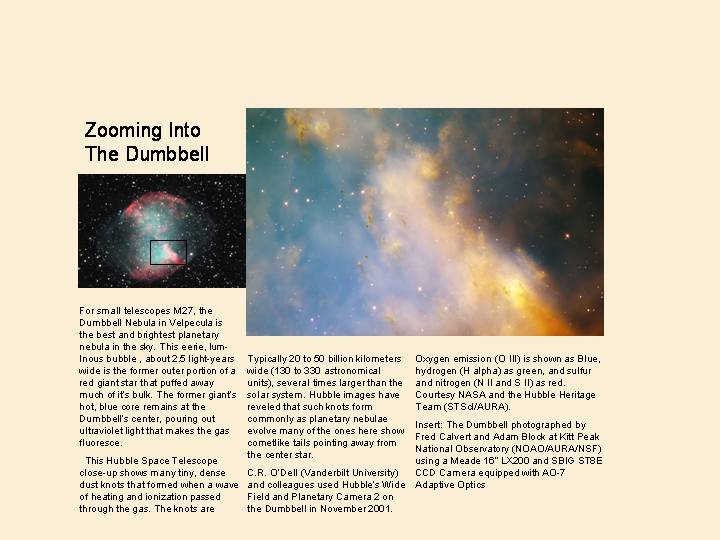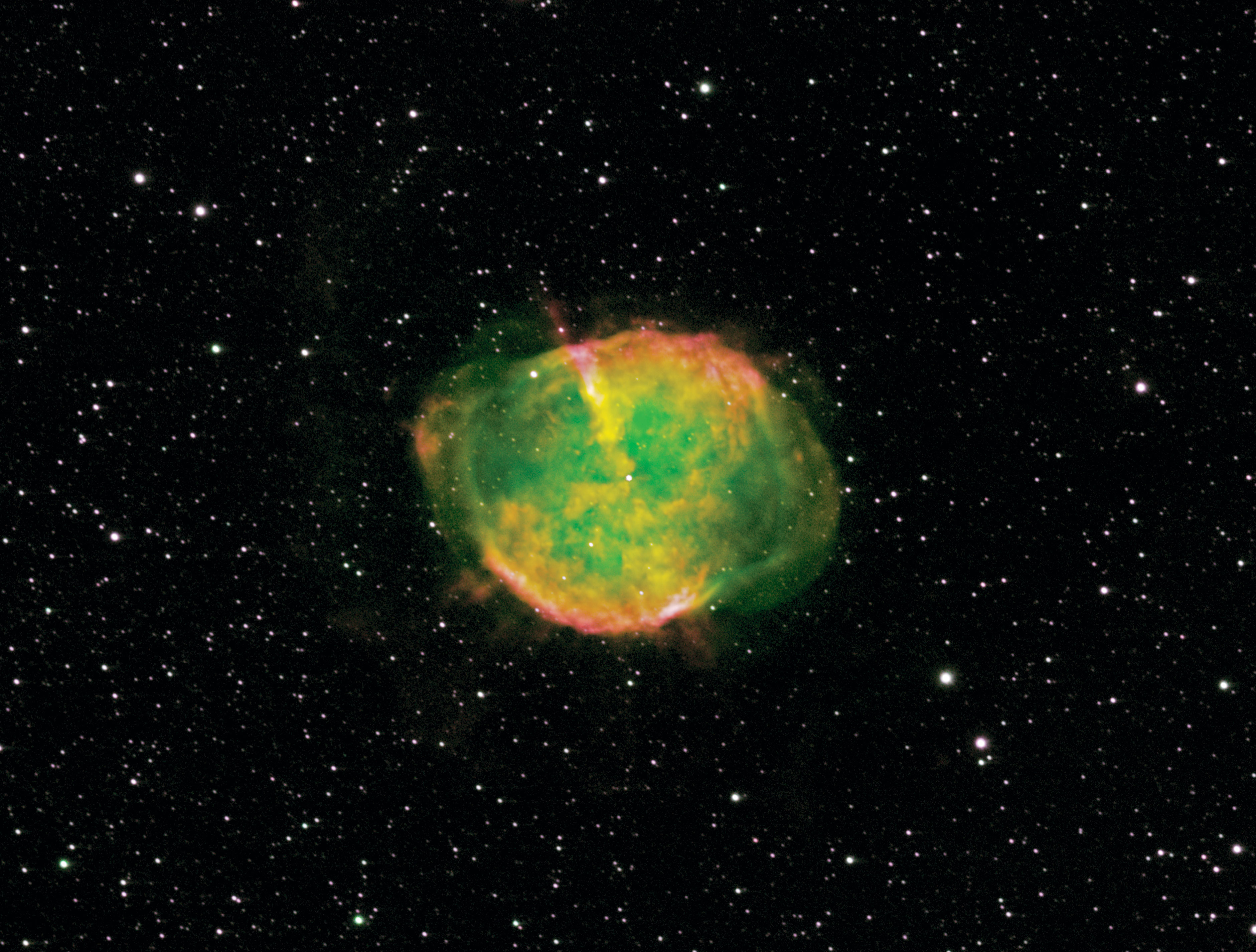M-27 The Dumbbell Nebula
This image was taken at Cold Spring Observatory using a 10 “Meade LX200ACF telescope and SBIG ST2000XM CCD Cameras in LRGB

Taken @ Kitt Peak National Observatory June 14, 2002
Additional Luminance Data: Cold Spring Observatory June 2005
Image Credits: Fred Calvert / Adam Block / NOAO / KPNO /AURA / NSF
Image Position: RA: 19h 57.274M Dec: 22 deg 8.297’ Planetary Nebula Magnitude 7.5 Distance 1250 Light Years
Meade LX200 16 inch Schmidt-Cassegrain Telescope, f/10
CCD: SBIG ST8E w AO-7 Adaptive Optics System
Exposure: LRGB
Luminance = 75 minutes (binned 1 X 1) + 60 minutes (binned 1 X 1) ST2000XME resized with Mira AP
Red = 10 minutes (binned 2 X 2) Green = 10 minutes (binned 2 X 2) Blue = 20 minutes (binned 2 X 2)
Image Processing: Maxim DL Mira AP Adobe Photoshop
The photo of M27 shown above was used as the insert for the new Hubble Space Telescope Image of the lower right section of M27 that was published in the May 2003 issue of Sky and Telescope Magazine


M27 in Narrowband Palette

Fred Calvert Cold Spring Observatory
Messier 27 (NGC 6853) is a typical planetary nebula and is located in the constellation Vulpecula (The Fox). It was the first planetary nebula ever discovered. On July 12, 1764, Charles Messier discovered this new and fascinating class of objects, and describes this one as an oval nebula without stars. The distance is rather uncertain, but it is believed to be around 1200 light-years. Despite its class, the Dumbbell Nebula has nothing to do with planets. It consists of very rarefied gas that has been ejected from the hot central star (well visible on this photo), now in one of the last evolutionary stages. The gas atoms in the nebula are excited (heated) by the intense ultraviolet radiation from this star and emit strongly at specific wavelengths. The central star of M27 is quite bright at magnitude 13.5, and it is an extremely hot blueish subdwarf dwarf star. Around 6 billion years from now our Sun might go through the same process, adding new materials to the universe for creation of new stars.
This image was taken at Cold Spring
Observatory using a 10 “Meade LX200ACF telescope and SBIG ST2000XM CCD Cameras
with Sulfur II, Hydrogen Alpha and Oxygen III narrowband filters